Cancer, autoimmunity and COVID-19
Yongpan Yan, PhD, co-founded Beijing Gencode Diagnostics Laboratory with the goal of developing a platform and tools to revolutionize the study of cancer immunity. With a background in cancer research and a focus on cell biology and bioinformatics, Yan directed an approach that combines molecular biology and immunology with cell biology tools that could uniquely contribute to our understanding of cancer and other diseases.

An approach that combines molecular biology, immunology and cell biology tools to uniquely contribute to our understanding of cancer and other diseases
Building an effective pipeline
|
Yan believes that in order to answer difficult questions about cancer immunity and immune response to any disease, we must go back to fundamentals. He and his colleagues designed their research process to focus on events at the cellular level. |
We integrate Imaging Mass Cytometry™ (IMC™) into our immunology technology platform, using IMC and CyTOF® systems along with cell culture and flow cytometry, ”
– Yongpan Yan, PhD
Valuable resource on tumor microenvironment heterogeneity
One foundation for success is strong collaborations. Through collaborators within China, it became possible to collect the types of samples needed to complete studies across different diseases. When performed by Yan and team, these studies benefit from using the same platform, applying knowledge from each study to the next one in order to generate unique hypotheses that result in new discoveries.
Yan and colleagues recently published a study revealing a heterogeneous tumor microenvironment (TME) in oral squamous cell carcinoma (OSCC) patients. Researchers from the Department of Oral and Maxillofacial Surgery at the Peking University School and Hospital of Stomatology in Beijing collaborated with Yan to analyze FFPE tumor tissue samples from four OSCC patients, stained using a panel of 26 immune or tumor-related antibodies and run on the Hyperion™ Imaging System.
The clinical research team was looking for ways to assess early-stage tumors and determine patient prognosis, an area where there is a lack of information about how to improve treatment planning and predict prognosis. With no current optimal biomarkers, there was interest in biomarker identification for contributing factors of prognosis of early-stage OSCC. Imaging the four samples enabled the team to analyze the TME and correlate patient outcome.
“With the aim of stratifying patients, we used IMC, which is the perfect immunology tool above NGS, bulk RNA-seq and DNA-seq, to see the real story behind a cancer type and solve questions that have long plagued clinical scientists,” Yan says.
High-dimensional proteomics analysis on the heterogeneity of tumor samples distinguished a variety and proportion of cell types including CD4+ T cells, CD8+ T cells, CD19+ B cells, CD11c+ dendritic cells, CD56+ natural killer cells, granulocytes and others, suggesting that ratios of cells within the tumor could contribute to different patients’ prognosis in the future.
The study aligns with the goal of Yan’s company, to learn more about the underlying cellular events occurring before, during and after cancer or immunotherapy treatments. However, the same obstacle arises across most diseases: a lack of robust biomarkers. As in this study, the identification of effective biomarkers to better predict disease outcome is critical to the development of immunotherapies or the assessment of combination therapies. The experiment is ongoing, with a plan to enroll 20 patients and obtain a better overall picture of what happens in the OSCC TME.
With the aim of stratifying patients, we used IMC, which is the perfect immunology tool above NGS, bulk RNA-seq and DNA-seq, to see the real story behind a cancer type and solve questions that have long plagued clinical scientists, ”
– Yongpan Yan, PhD
Moving to COVID-19
Additional collaborations with the Jinyintan Hospital and Union Hospital in Wuhan led to a unique opportunity to ask questions about outcomes in some of the first severe cases of COVID-19. These hospitals specialize in infectious disease and were the frontline for patients at the early stages of the COVID-19 pandemic.
An aspect of this study that makes it stand out from others on COVID-19 was that the team had access to tissue samples of multiple organs from a group of patients. Most studies analyze samples from one organ, primarily the lung. In this one, researchers could associate immune changes across organs in the same patient. They obtained samples from three patients through autopsy and analyzed FFPE slides from the lung, heart, liver, kidney, brain, intestine and spleen of each, plus controls, for a total of 28 tissue samples.
Yan’s lab was one of the few in the area capable of a large IMC study to investigate COVID-19 in severe or critical phase post-mortem patients. The samples were run over a two-week period using an IMC panel containing 26 antibodies to decipher different immune cell subtypes. Immunology and bioinformatics analysis were run in parallel.
In addition to comparing immune response across the different organs, the group worked to understand infections in the lung and how resulting tissue damage arose and spread.
Based on earlier publications discussing cytokine storm and how it can affect tissues, they focused on cytokine activation and certain types of immune cells: T cells, macrophages and NK cells. Contrary to expectations that IL-6 would be most active, TNF-α and IL-10 had significant up-regulation in all 3 patients compared to the controls. These findings provided robust biomarkers for further study and suggest that TNF-α could be a potential therapeutic target.
Analyzing the data
Having already developed an efficient pipeline that produced robust data, the team could rely on it to study COVID-19. But with so many different tissue types, researchers had no comparisons for what they might find in the lung vs. the heart vs. the brain within a single patient, or between patients. Yan’s collaborations came into play again, with specialists in the different tissue types to help optimize and analyze the data. They provided knowledge of the various tissue types in the different organ samples, something that was fundamental to processing the COVID-19 tissues.
The growing impact of IMC
“Originally, we did think about using fluorescence, but you can only achieve analysis with a handful of markers, generally not more than five. If it's more than five, it's a really difficult technology,” Yan explains.
“COVID-19 and cancer immunology have complicated stories. The samples are complex, composed of many different cell types, and involve cytokines, not to mention what interactions occur between the cells. Fluorescence won't give you a whole picture of what happens in a tissue at the cell level. Fortunately, with IMC we can see into the tissue structure, especially at cellular or even subcellular definition.”
Through Yan’s approach using IMC, the team became the first to look into the tissue structure of COVID-19 patients not only in the lung, but in other tissue types as well. This is of significant value to the scientific community.
Yan hopes that patients will benefit from the study and that hospitals can start to think about using different treatments for this serious infectious disease.
In the future
The group is ramping up to use IMC in more studies this year. Between a follow-up to the OSCC preliminary study and other collaborations with a group working on immunotherapy for breast cancer, the labs are busy preparing for more preclinical research.
“This is a great direction for us, and we are interested to see benefits to both research and clinical decisions.”
References:
-
Xie, S. et al. “Hyperion Imaging System reveals heterogeneous tumor microenvironment of oral squamous cell carcinoma patients at T1N0M0 stage.” Annals of Translational Medicine (2020): 1513.
-
Wang, C. et al. “Imaging mass cytometric analysis of postmortem tissues reveals dysregulated immune cell and cytokine responses in multiple organs of COVID-19 patients.” Frontiers in Microbiology (2020): 600989
Important Links:
Customer Stories
Yongpan Yan, PhD
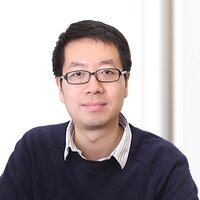
An approach that combines molecular biology, immunology and cell biology tools to uniquely
Febe van Maldegem, PhD, and Karishma Valand

Imaging the dramatic remodeling of the lung tumor microenvironment
Melissa Davis, PhD

Defining spatial characteristics using Imaging Mass Cytometry
Rebecca Ihrie, PhD
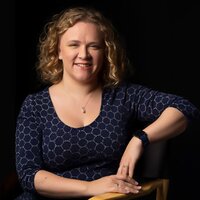
How CyTOF technology enabled a look into the heterogeneity of glioblastoma.
Bernd Bodenmiller, PhD

Bernd Bodenmiller on revealing new insights into tumors with Imaging Mass Cytometry
David L. Rimm, MD, PhD

David Rimm on the value of Imaging Mass Cytometry for immunology applications at Yale
Sonia Gavasso, PhD
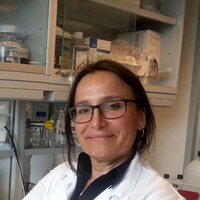
Sonia Gavasso on the potential for mass cytometry to improve immunotherapy
Sean Bendall, PhD

In the Field: How Sean Bendall is advancing Stanford proteomics research
Ansuman Satpathy, MD, PhD

Stanford’s Ansu Satpathy designed single-cell T-ATAC-seq, now available at Script Hub
Evan Newell, PhD

Evan Newell on decoding immune cell heterogeneity with mass cytometry
Akil Merchant, MD
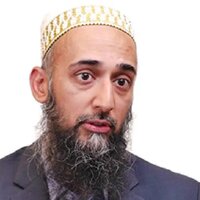
Hear how researchers are using Imaging Mass Cytometry.
Wendy Fantl, PhD

On the right path to better ovarian cancer diagnosis and treatment
Corinne Ramos, PhD, MBA

Advancing drug development with molecular imaging
Shyam Prabhakar, PhD

Analysis of Single-Cell Transcriptomes in Colorectal Cancer by Shyam Prabhakar
Hartland Jackson, PhD

Entering an era of new biology
Daniel Schulz, PhD

Discovering a chemokine’s purpose in fighting tumors using RNA and protein co-detection
Taylor Witte, BS

Rapid-fire Q&A: We give you a topic, you tell us what’s on your mind.
Chad Stevens, MS

Rapid-fire Q&A: We give you a topic, you tell us what’s on your mind.
Zinaida Good, PhD

Finding biomarkers for toxicity and progression in lymphoma using CyTOF® flow cytometry
Jana Fischer, PhD

Paving a new road for spatial biology in precision medicine
Kara Davis, DO

Predicting relapse in childhood leukemia and expanding therapy options
Marcelo Sztein, MD

Rapid-fire Q&A: We give you a topic, you tell us what’s on your mind.
Marina Malovichko, PhD
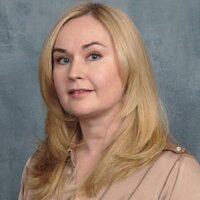
Rapid-fire Q&A: We give you a topic, you tell us what’s on your mind.
Xianting Ding, PhD

High-dimensional single-cell analysis enhances precision medicine
Dr. Dexi Chen, PhD, MD
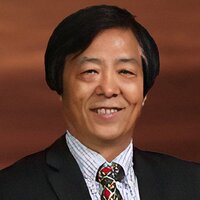
Achieving multi-omic insights with microfluidics and CyTOF technology
Denis Schapiro, PhD

The interactive histoCAT toolbox unifies the cytometry and imaging communities
For Research Use Only. Not for use in diagnostic procedures. Patent and License Information: www.standardbio.com/legal/notices. Trademarks: www.standardbio.com/legal/trademarks. Any other trademarks are the sole property of their respective owners. ©2025 Standard BioTools Inc. All rights reserved.
